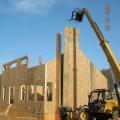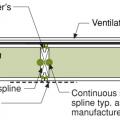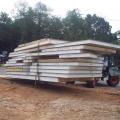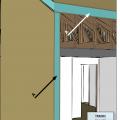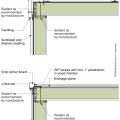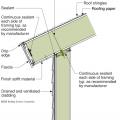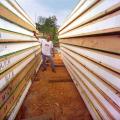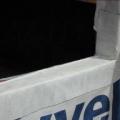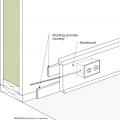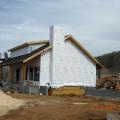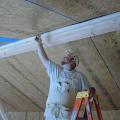Showing results 1 - 19 of 19
A structural spline made of a solid 2x is used where needed to meet structural load requirements at SIP panel seams
A surface spline reduces thermal bridging much more than a structural spline at SIP panel seams
An all-terrain forklift is used to move and stage the panels
An insulated spline is another option for avoiding thermal bridging at SIP panel seams
Construct exterior walls with structural insulated panels (SIPs) to provide an airtight wall with consistent insulation and very little thermal bridging.
Install a housewrap drainage plane between the SIP panels and the exterior cladding
Lifting plates attached to the wall provide good bracing to tighten up SIP panel seams
Make sure the beads of caulk are continuous the full length at each SIP panel seam, such as at the wall-roof seam, to maintain air barrier continuity
Peel-and-stick panel tape provides added assurance that SIP panel seams will remain airtight
SIP panel walls are less susceptible to air leakage and convection issues than stick-built walls
SIP panels should be stacked high, dry, and flat
The back dam of the window sill will force water out
This foundation/floor/SIP wall detail shows recommended support of SIP wall panel at the sill plate
This technique for installing electrical wiring avoids the need to cut into the SIP panel
Two layers of high-permeability house wrap are installed to provide a drainage layer between the SIPS and the homes external cladding
Use a smoke pencil to check for air leaks at SIP panel seams, especially along the ridge beam
Walls are being assembled at this SIP house
